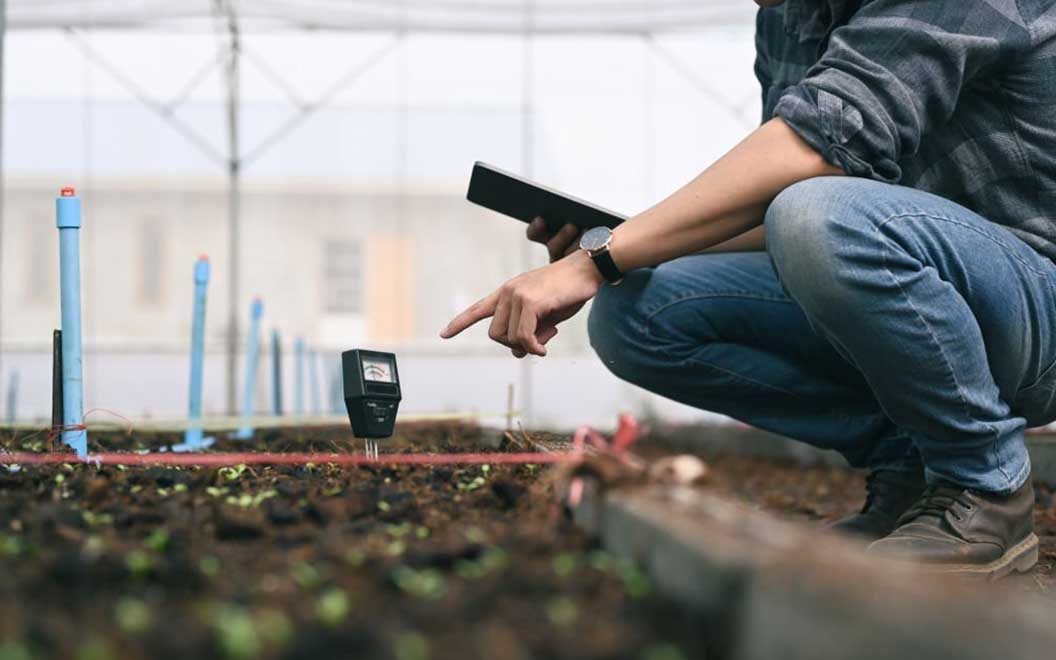Regarding the soil, people generally use soil sensors for monitoring according to their needs. The amount of water in the soil is measured or estimated using soil moisture sensors. These sensors might be fixed or mobile, like handheld probes. Portable soil moisture probes can test soil moisture at many sites, whereas stationary sensors are put at predetermined locations and depths in the field.
They can determine the amount of water in the soil and estimate the amount of water stored in the soil horizon. Soil moisture sensors do not directly measure the amount of water in the soil. Instead, they track changes in another soil parameter that is predictable in relation to water content. Each sensor manufacturer uses different technologies to measure soil moisture content.
Soil moisture refers to the water content of the soil and is the most important and commonly used soil information. It is the basis for scientifically controlling and adjusting the soil condition, carrying out water-saving irrigation, and realizing scientific water use and irrigation automation. Due to the spatial variability of soil structure and soil moisture, the soil moisture content in the same plot is different, which requires the determination of soil moisture content.
TYPES OF SOIL MOISTURE SENSORS
The most common types of soil moisture sensors include gypsum blocks, tension meters, capacitance, volumetric, and neutron probes. These sensors either measure soil tension when placed in the soil or measure volumetric water content.
PRINCIPLE OF OPERATION
A Soil Moisture Sensor can either use resistance or capacitance changes to measure the water content of the soil. To further understand both working principles, we’ll take a look at how each of them work.
Sensor installation
Sensors should be placed at several different depths and locations in the field. Typically, sensors are placed in pairs at one-third and two-thirds the depth of the crop root zone and at two or more locations in the field, preferably in the representative soil type away from high points, depressions and slopes.
Some fields contain both heavy and light textured soils. In those fields, it is recommended that each soil type be monitored and managed separately for irrigation. Field mapping technologies can be used to identify different soil, such as electromagnetic conductivity (EM) mapping. By identifying different soils (different water holding capacities), management zones can be created that can be managed separately.
How to install sensors
The method of installation is dependent upon the design of the sensor. Follow the installation instructions given by the manufacturer. In general, soil moisture sensor installation is done in one of two ways:
- By digging a hole or a trench and installing sensors horizontally at different depths or
- By using an auger or soil sampling probe to bore a hole and install sensors vertically.
Care must be taken when drilling the hole. Do not install the sensor in an oversize hole as it may cause voids and air gaps. To prevent air gaps, some users use a mixture of soil and water (soil slurry) during the installation; however, in many cases, the structure of the slurry does not match the surrounding soil, which may adversely affect the sensor reading.
It is important to note that for a soil sensor to work, no matter the type, it must make contact with the soil. The highest accuracy will be obtained when the soil sensor is entirely surrounded by the soil, with no gaps between the probe and the soil.
Sensor Placement
- Place stationary sensors between plants within a crop row at their desired depths.
- Flag the sensors so field equipment operators can see where they are and prevent damage to them.
- Do not install the sensors close to the pivot wheel track and make sure that the sensor is in direct contact with soil and there is minimal soil disturbance during installation.


Comments are closed.